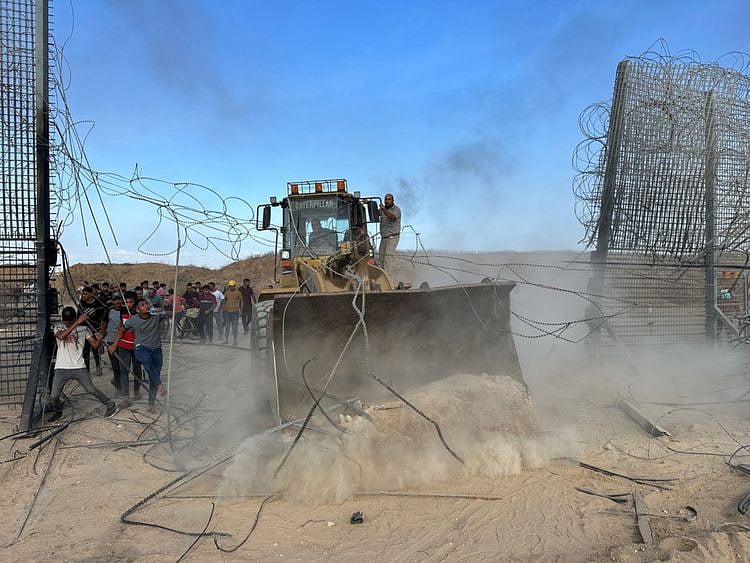Israel-Gaza war: How Hamas militants breached Israel’s ‘Iron Wall’
64km-long barricade along the Gaza Strip includes underground concrete barrier

Beirut: The massive, complex attack on Israel on Saturday by militants from Gaza Strip stunned Israelis, who watched in horror as fighters easily bypassed one of the world’s most advanced security systems.
The “smart fence” that separates Israel from Gaza is equipped with cutting-edge technology, designed to detect any security breach. This is how the militants got through.
In 2021 Israel announced the completion of its “smart fence,” a 40-mile-long (64km) barricade along the Gaza Strip that included an underground concrete barrier.
The project was publicly announced in 2016 after Hamas used underground tunnels to attack Israeli forces in the 2014 war. It required more than 140,000 tonnes of iron and steel, according to Reuters, and the installation of hundreds of cameras, radars and sensors.
Access near the fence on the Gaza side was limited to farmers on foot. On the Israeli side, observation towers and sand dunes were put in place to monitor threats and slow intruders.
Also Read
Why TikTok videos on the Israel-Hamas war have drawn billions of viewsSecretive Hamas commander Mohammad Deif who masterminded the attack on IsraelHezbollah says it fired missiles from Lebanon into IsraelThe heartbreaking impact of Israel-Gaza conflictIn 2021, then-Defence Minister Benny Gantz said the barrier placed an “iron wall” between Hamas and southern Israel.
But on Saturday, a surprise series of coordinated efforts enabled Hamas to get past the wall.
The fence was breached at 29 points, according to the Israel Defence Forces.
Though there were Israeli guard towers positioned every 500 feet along the perimeter of the wall at some points, the militants appeared to encounter little resistance.
The border was minimally staffed, it soon became apparent, with much of Israel’s military diverted to focus on unrest in the West Bank.
“The most compelling parts of the system were the ones that provided indicators and warnings,” said Matthew Levitt, director of the counterterrorism program at the Washington Institute for Near East Policy.
“But once you don’t see in advance that someone is massed at the fence, it’s still just a fence. A big fence, but just a fence.”
1. Drones dropped explosives
Using commercial drones, Hamas bombed Israeli observation towers, communications infrastructure and weapons systems along the border.
2. Coordinated rocket fire and manpower
Israel said Hamas fired more than 3,000 rockets into the country, with some reaching as far as Tel Aviv and Jerusalem. Militants on fan-powered hang gliders flew across the border.
3. Explosives along the fence
Militants also used explosives to blow up sections of the barrier. Men on motorbikes drove through the gaps.
4. Widening the gap
Bulldozers did the rest, allowing enough space for larger vehicles to drive through.
Experts said the attack would have required weeks, at least, of preparation and subterfuge.
“The key would be to move equipment into position over a period of weeks beforehand, and then put it into buildings or under tarps,” said Michael E. O’Hanlon, a senior fellow at the Brookings Institution.
He noted that many of the vehicles could have been hidden in plain sight in parking lots or construction zones.
Still, “The idea of a bull dozer getting that close to the fence at all just boggles the mind,” Levitt said.
Sign up for the Daily Briefing
Get the latest news and updates straight to your inbox
Network Links
GN StoreDownload our app
© Al Nisr Publishing LLC 2025. All rights reserved.